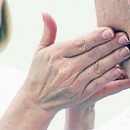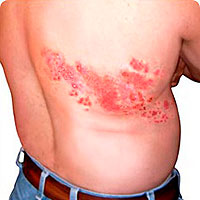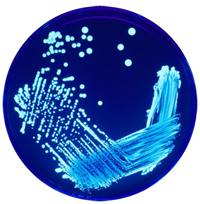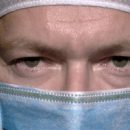In the human body there are four liquids through which HIV is transmitted: blood, sperm, vaginal selection, breast milk. The virus is transmitted only if a certain amount of fluid with a significant concentration of the virus falls into the body and there is the possibility of entering the virus directly into the blood.
Content
Ways transfer
There are only three ways to transfer HIV infection: sexual, through blood and from HIV-positive mother to the child.
The sexual path of infection is possible with sexual contact
Without the use of a condom - containing HIV cum or vaginal
Selection fall into blood through the mucous membrane.
The virus can be transmitted through blood in the following cases:
- when combined needles, syringes and other injection equipment;
- When using non-sterile tools for tattoos and piercing;
- When overflowing blood containing a virus.
The virus can be transmitted from mother to child:
- during pregnancy (through the placenta);
- during childbirth (through contact with the blood of the mother);
- In the process of breastfeeding (through maternal milk).
Unprotected sex
HIV during sex is transmitted due to contact containing liquids -
blood, sperm or vaginal discharge - with mucous membranes
(penis, rectum, vagina and, to lesser, mouth) or
due to their direct hit in the bloodstream (if available
damage). Prevent the transmission of the virus can be eliminating contact with
Listed liquids. The most common way of this
achieve the use of a condom.
Most often, the transfer of HIV during proximity occurs when
containing vaginal discharge virus or sperm in the mouth, in the vagina,
rectum or penis. In this situation containing the virus
Liquid contact with mucous membrane. There are viruses
Attack of the immune system and transported to nearby lymph
nodes where microbes falling on the mucous membrane are usually destroyed. but
HIV peculiarity is that he is amazing the immune
The system to which the lymph nodes belong. Therefore, protection does not work
and develops HIV infection.
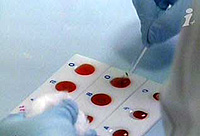
With intense sex mucous membrane and thin leather of genital organs
Often injured. Through abrasions and cracks open the way for
direct contact with blood. It increases the risk of transmission
Virus. Yazovki, pimples on mucous membranes (resulting from
various venereal diseases, especially gonorrhea and t.NS.) can
Play a similar role, contributing to the entrance or exit
HIV-infected blood through these gates with sexual contact.
From a practical point of view, this means that the transfer of the virus
Probative: accompanying sexual diseases,
High intensity sex without sufficient training, ejaculation
Directly in the partner.
Reduce the risk of transmission of the virus can be avoiding injuries during sex
(Using lubricants), refusing to ejaculation in a partner. As
The content of the virus in saliva is slightly, its transmission under oral
Sex is possible only in one direction, with sperm, when ejaculation in the mouth.
Commercially available solutions and ointments for local «Disinfection» after
Sexual contact kill HIV only in laboratory experiments.
Reliable data that they destroy the virus in vivo,
No. Many similar solutions, especially containing chlorine compounds,
cause irritation and ulcers on the genitals, which, on the contrary,
can become open gate for virus. On the other hand, these
Means are effective against venereal diseases, so their
Use can be regarded as work to reduce the risk of transmission
HIV in the future.
Since in the saliva HIV too little, the virus is not transmitted through the kiss.
For all the many years of medical observation history, not a single fact
HIV transmission with a kiss is not registered. Sometimes they say that the risk
represents the presence of a wound and yasers in the mouth and on the lips, but in such
The case for transmitting the virus is necessary for each partner
open bleeding wound in oral cavity. Non-damped skin
is an irresistible barrier for the virus. Therefore, HIV is not transmitted
Through arms. HIV can live outside the body just a few minutes, so
that drops and traces of physiological fluids, for example in bed
Linen, do not pose a danger.
Note that the risk of virus transmission depends exclusively
Circumstances of concrete sexual contact. «Random» whether that
Communication or «love», it does not matter. With multiple
Contacts The probability of transmitting a virus increases in proportion to.
Use of injecting drugs
In drug injections or, iniquity, injection use
psychoactive substances in the body can get a certain amount
Blood containing HIV. In the used syringe or needle always remains
blood in which the virus can live for several days. Even
Blood traces can be enough to transmit infection.
Therefore, the most effective way to prevent the transmission of the virus by this
By the use of only sterile individual disposable
Injection tools. It is important to understand that it is not only about
a syringe with a needle, but about all objects in contact with psychoactive
substance after boiling solution.
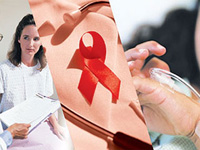
The risk of transmission of the virus occurs when using debit and earlier
used needles and syringes. Dangerous are the purchase of drugs in already
filled syringe and distribution of substance by method «Refuel» (when
The solution is introduced from one syringe to another through the hole from the removed
Needles or from a pulled piston).
The probability of transmitting the virus during joint injection in significant
degree depends on the degree of cleaning the syringe after the first use and
The number of virus in the remaining blood syringe. There are significant
Data that troped washing with clean water cleans the syringe
him sufficiently to consider statistically unlikely -
If not impossible - HIV content in it.
In addition to the actual syringe, HIV transmission can provide common spoons,
cotton filters and water used to dissolve psychoactive
Substances or washing injecting tools. Application
Separate cotton filter and unused water make it possible to exclude
Transfer of the virus at this stage. Spoons can be sterilized by calcining
Outdoor fire.
It is important to remember that the transfer of HIV by injection tools
may occur not only during joint use
psychoactive substances, but in the process of dividing the dose of psychoactive
substances at various stages of their distribution.
There is an opinion that HIV can penetrate the psychotropic agent in
The process of its production through containers and various adaptations
for transfusion, filtering and mixing ingredients, as well as through
Injection tools to which the product is selected from the container for
Sample. However, facts, including the results of laboratory research,
It is suggested that even when in a psychoactive substance of blood,
containing the virus, HIV loses activity from heating and boiling
Solution in the process of preparation of the drug.
Statistics proves that the conduct of syringe exchange programs
Reduces the probability of spreading immunodeficiency virus. We have B
the country where these programs are not common, the syringes are nevertheless always
You can buy on any pharmacy, including around the clock. They are inexpensive
(significantly cheaper doses of any psychoactive substance) and
Guaranteed safe.
From mother to child
HIV can be transferred to a child from mother during pregnancy, childbirth and
Breastfeeding. On each of the listed steps this probability
It can be significantly reduced. During pregnancy, the risk of transmission of the virus can
reduce if the mother will take special medicines. Shows
Virus during childbirth can be avoided using special methods
Governs. Breastfeeding need to be replaced by artificial.
These actions can reduce the risk of transmission of the virus from the mother of the child to
3-8 percent. Therefore, pregnant women and women planning
Take the child, it is important to know your HIV status.
During pregnancy, the blood of a child and mother is not mixed, but between
parents and fetus organisms, in the placenta, there is a constant exchange
Various substances. This, the virus can get to the child.
Modern methods of treating HIV infection make it possible to reduce
The number of virus in the mother's body is almost zero. Therefore, when
Properly selected drugs Risk of HIV transmission baby,
located in the womb, significantly decreases. International recognized
short-term dosage scheme that allows you to control the virus,
It is assigned from 36 weeks of pregnancy and until childbirth.
In childbirth, the child passes through the genital path of the mother, contacting with
mucous membranes. The virus that is contained in the vaginal secrecy,
can get into the organism of the newborn. Also often breaking trips
paths, microtrauma, cracks. This may cause contact with
Baby of the blood of a mother containing the virus. Therefore, during childbirth
The presence of a physician specializing in HIV infection is especially important
(In some cities there are special hospitals for HIV-infected
mothers). Certain methods of objects allow to reduce
probability of transmission of the virus in childbirth. In particular, the specialist should
Conduct safe natural childbirth or offer cesarean section,
appoint special antiviral means of mothers directly
During childbirth and child for 72 hours after birth.
In breast milk contains HIV, which will fall into the body
newborn if the mother will not give up breastfeeding.
Therefore, in order to avoid the transfer of the virus baby, it is necessary
Go to full artificial feeding, that is, feed the child
only substitutes of breast milk.


